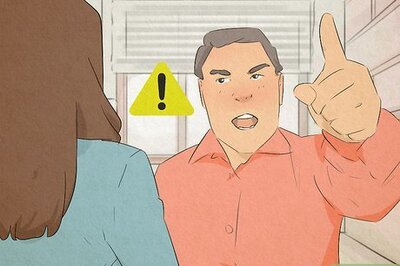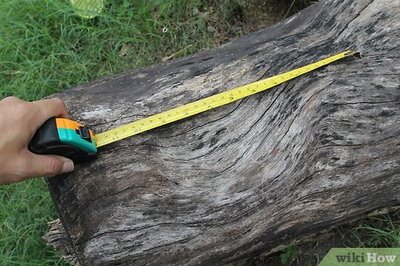
views
X
Expert Source
Miguel Cunha, DPMBoard Certified Podiatrist
[v161376_b01]/. 1 May 2020.
You can care for most cases of Achilles tendinitis at home, but you should still see a doctor regarding the exact steps that are right for your injury.
Treating Achilles Tendonitis
Visit your doctor. Before you start trying to treat yourself for Achilles tendonitis, you should consult your doctor. She will make the correct diagnosis and develop an individualized treatment plan for your specific injury. Make sure you tell your doctor about any recently increased physical activity involving your lower legs since this is likely the source of the injury. The doctor will also give you an idea of how long you should refrain from activity. If the pain associated with your Achilles tendon is severe or if you experience a sudden disability with the flexion of your foot, then see a doctor immediately. You may actually have a torn or ruptured Achilles tendon, which is a far more serious diagnosis. More common symptoms of Achilles tendonitis that may warrant a trip to the doctor include mild-to-moderate aches in the back of the leg or above the heel, especially after a sports activity or exercise. You may additionally experience tenderness or stiffness in the area, which is most commonly felt first thing in the morning.
Rest the tendon. One of the first things you can do to help mend your injury is to give the tendon plenty of rest. You don’t have to stay off the foot entirely, but you should avoid running, stair climbing, and other high-impact sources of stress to the tendon. Depending on the severity of the tendonitis, you may need to rest the tendon anywhere from days to months. Listen to your body and reintroduce high-impact activities slowly. While resting your Achilles tendon, switch to low-impact exercise options such as biking, elliptical exercises, and swimming.
Ice your calf to reduce pain. Not only will ice numb the area, but it will help reduce swelling in the area, which will also help reduce pain. Place an ice pack on your calf at the site of the pain for about fifteen minutes. You can repeat this as needed throughout the day whenever pain is present. If you anticipate pain after an exercise, you can also ice the injured calf after an exercise as well. You can ice the area for up to twenty minutes, but you should always stop to let the skin warm up if you start to feel the skin go numb.
Take nonprescription pain relievers. You can take acetaminophen or non-steroidal anti-inflammatory drugs (NSAIDs) such as ibuprofen or naproxen to reduce pain and swelling associated with Achilles tendonitis. Always carefully follow the directions, and do not take more than directed for each drug. Try a short course of seven to 10 days. Even when used as directed, most over-the-counter pain relievers are not meant for daily use. Consult your doctor before taking an OTC medicine for your injury for longer than one month. If your doctor writes you a prescription for a stronger pain reliever, ensure that you always take it as directed.
Use wraps or compression bandages. Wrap your foot and lower leg with elastic bandages or compression wraps. Compression helps reduce swelling and movement in the affected tendon.
Elevate your foot above chest level to reduce swelling. Keeping the injured tendon above the level of your heart will also help to reduce swelling. If you can find a comfortable position to do so, consider sleeping with your foot elevated as well. You can also use an ankle brace or a pneumatic cam boot. These will help restrict your ankle from bending, which will give your tendon time to heal.
Avoid smoking and other tobacco products. Smoking slows healing by decreasing blood supply and slowing tissue repair. You can help reduce your amount of down time by avoiding all tobacco products while healing your injury.
Wear footwear that protects the tendon. Athletic shoes that both support your arches and cushion your heels can help reduce pain and promote healing. Additionally shoes that are softer at the back of the heel will reduce unnecessary irritation to the tendon. In some cases, your doctor or physical therapist may also advise some type of insert of orthotic. These devices go into a shoe to increase support on a specific area of the foot. Orthotic devices more commonly help insertional Achilles tendonitis (lower in the leg where the tendon inserts into the heel) because the area is more likely to be irritated by certain footwear. If your pain is severe, your doctor may also recommend a recovery boot in order to keep the foot flexed and strain off the tendon. This is usually a short-term step since prolonged use of a boot can weaken calf muscles.
Ask your doctor about cortisone injections. Cortisone is an effective anti-inflammatory medication. Cortisone injections are common for many uses in order to reduce pain and swelling. However, due to the increased risk of damage to the tendon with the injection, your doctor may not recommend this option until you’ve exhausted other possible treatments.
Consult your doctor regarding surgical options. If a combination of treatments and physical therapy options do not improve your pain for six months or longer, then your doctor may decide to discuss some surgical options. Some of these options include: Gastrocnemius recession — This surgery lengthens calf muscles in order to take additional stress off your Achilles tendon. Debridement and repair — This operation removes the damaged portion of the Achilles tendon and is usually only for tendons with less than 50% damage. Debridement with tendon transfer — For tendons with more than 50% damage, tendon from the big toe is transferred to the Achilles tendon when the damaged portion is moved in order to keep the tendon strong enough to function.
Building Strength in the Tendon
Consult a physical therapist. For severe cases of Achilles tendonitis, you should consult a physical therapist in order to come up with a strengthening regimen to suit your individual injury. A physical therapist will likely have you start with easier exercises and build to ones that place a greater stretch on the tendon. Even for mild cases where a physical therapist is not necessary, keep in mind that gentle strengthening and stretching options are always recommended when healing a tendon.
Perform toe stretches. To perform this exercise, sit in a chair with your heel on the floor. Reach down and pull your big toe up and back toward you. Hold the position for around fifteen seconds when you first start the exercise, but gradually increase time to thirty seconds. You can do this exercise for up to four repetitions at a time and five times a day.
Perform calf-plantar fascia stretches. To perform this exercise, sit on the floor or a mat with your legs outstretched and knees straight. Loop a towel around your foot on the injured leg so that it passes just beneath your toes. Pull back on the towel with both hands to stretch your foot up toward you. Hold the position for 15-30 seconds. You can perform this exercise for up to four repetitions at a time and five times per day.
Perform calf stretch exercises. This basic exercise is great for stretching calf muscles and your Achilles tendon. Plant one foot behind you with your heel flat on the ground. Lean against a wall with both hands and place your weight on your bent, forward leg. Slowly push your hips toward the wall while keeping your back foot planted. Hold the position for ten seconds. You will feel a strong pull in the calf of your back leg. You can repeat this exercise up to twenty times on each foot daily. You can find further instructions for this calf stretch exercise at: How to Stretch Your Calves
Perform bilateral heel drops. Heel drops are eccentric exercises, which means they tighten a muscle as it elongates, making them great for stretching. To perform, stand with the front half of both feet on a stair, and then raise your heels up before lowering them down as low as you can. Since the back half of your feet will hang off the stair, you should be able to lower them further than the rest of your feet. Perform this exercise in a slow, controlled fashion for twenty repetitions. As you build strength, you can begin holding weights in order to increase strengthening as you perform this exercise. You can also perform single heel drops, which are basically the same exercise but on one leg only. Always start with bilateral heel drops, and consult your physical therapist before attempting single heel drops since they can potentially cause further damage to the tendon.
Take steps to prevent future Achilles tendonitis. You can take several steps with regard to exercise in order to prevent injuring the tendon again (or in the first place). You should: Start slowly and increase activity level gradually with regard to exercise and sports Stretch daily Focus on calf muscle exercises Alternate between high- and low-impact exercises




















Comments
0 comment